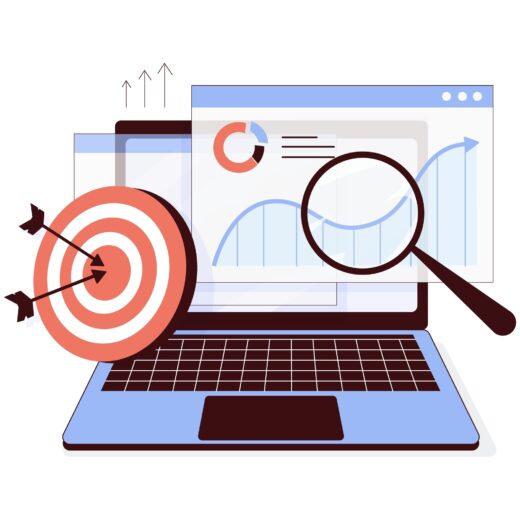Halfway Through 2025: 5 Digital Marketing Metrics to Review This June

As we hit the halfway point of 2025, it’s the perfect time to reflect on your digital marketing strategies and assess how well they’re performing. June is an excellent opportunity to review key metrics to ensure you’re on track to meet your goals for the year. Here are five essential digital marketing metrics to check now.
1. Website Traffic: Understanding Visitor Trends
Website traffic is one of the most fundamental metrics to track. It reveals how well your website is performing in terms of attracting visitors. Reviewing your traffic patterns in June allows you to evaluate the effectiveness of your content marketing, SEO efforts, and paid campaigns.
Key things to consider:
-
Organic vs Paid Traffic: Are you seeing growth from organic search or is paid traffic dominating?
-
Source Breakdown: Which channels (social media, direct traffic, referrals, etc.) are driving the most visitors?
-
Seasonal Trends: Are there any spikes or dips in traffic, and what might be causing them?
If you notice any declines in traffic, it might be time to revisit your SEO strategy, optimise your content, or adjust your paid ad campaigns.
2. Conversion Rate: Turning Visitors into Customers
It’s not enough to simply attract visitors to your site—you need to ensure that those visitors take action. Conversion rate, which measures the percentage of visitors who complete a desired action (like filling out a form, making a purchase, or subscribing), is critical to understanding the ROI of your digital marketing efforts.
Key points to evaluate:
-
Landing Pages: Are your landing pages optimised for conversions? Test different elements (headlines, CTAs, form fields) to improve performance.
-
Lead Generation: If your goal is to generate leads, are your lead magnets effective in attracting and converting visitors?
-
Abandoned Carts: For e-commerce, abandoned cart rates can be an indicator that your checkout process needs to be improved.
By reviewing your conversion rates, you can identify areas of improvement in your sales funnel and make data-driven decisions to increase your ROI.
3. Customer Acquisition Cost: Measuring Cost-Efficiency
Customer Acquisition Cost (CAC) is the average amount you spend to acquire a new customer. This metric is essential for understanding the efficiency of your marketing budget and ensuring that your advertising spend is sustainable.
To calculate CAC:
-
Formula: CAC = Total Marketing Spend / Number of New Customers Acquired
Reviewing CAC mid-year helps you identify whether your marketing investments are yielding a reasonable return. If your CAC is high, you may need to adjust your targeting, optimise ad campaigns, or explore cheaper acquisition channels.
4. Engagement Metrics: Gauging Audience Interaction
Engagement metrics, such as likes, shares, comments, and time spent on content, provide valuable insights into how well your audience is connecting with your brand. These metrics are especially important for social media and content marketing campaigns.
Key engagement metrics to review:
-
Social Media Engagement: Are your posts getting the attention they deserve? Look at likes, shares, and comments to gauge how your audience is interacting.
-
Average Session Duration: On your website, how long are visitors staying? A higher average session duration suggests that your content is valuable and engaging.
-
Bounce Rate: If your bounce rate is high, it might indicate that visitors aren’t finding what they’re looking for, and your content or landing pages need tweaking.
High engagement is a strong signal that your audience is invested in your brand, so regularly reviewing these metrics helps you optimise your approach.
5. Email Marketing Performance: Optimising for Open Rates and Clicks
Email marketing remains one of the most effective digital marketing channels. However, it’s essential to track performance metrics such as open rates, click-through rates, and conversion rates to ensure your campaigns are successful.
Metrics to consider:
-
Open Rate: Are your subject lines compelling enough to get recipients to open your emails? If open rates are low, consider A/B testing your subject lines.
-
Click-Through Rate: Are people engaging with your email content? A low CTR may suggest that your call to action isn’t clear or enticing enough.
-
Unsubscribes: Monitor the number of unsubscribes. If this number is increasing, it might be time to reassess your email content or frequency.
By focusing on email performance, you can refine your messaging and increase overall engagement.
As we approach the middle of 2025, taking the time to review these five critical digital marketing metrics can provide valuable insights into your strategy’s effectiveness. By staying on top of these metrics, you can make informed decisions that will drive continued success for the rest of the year.







